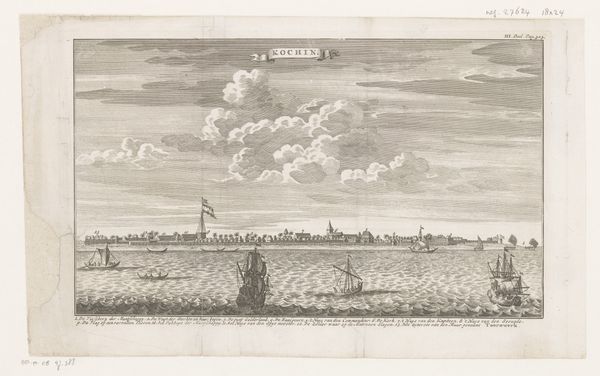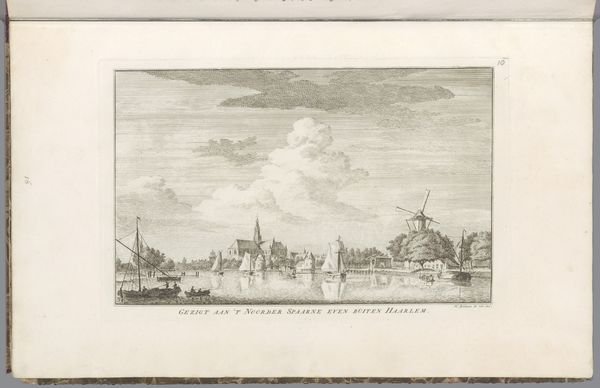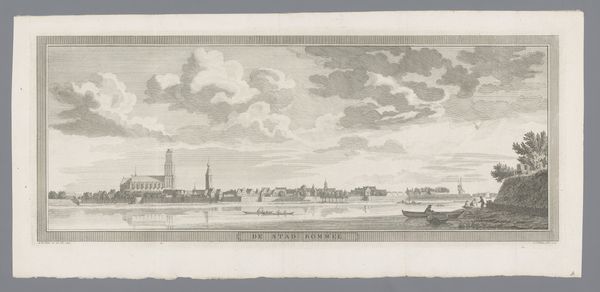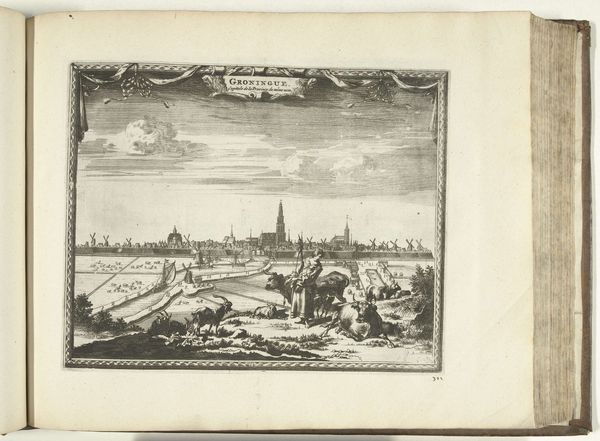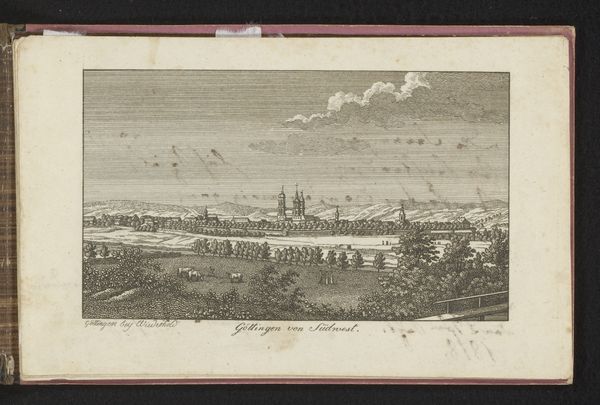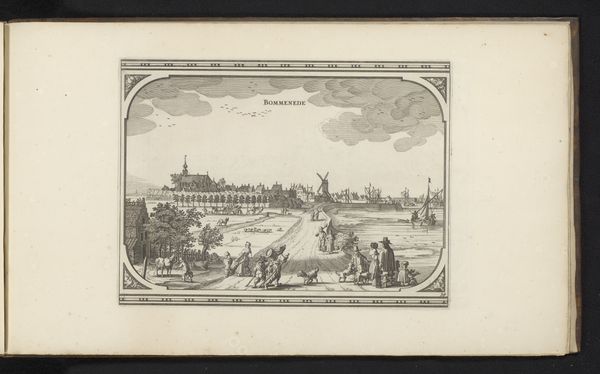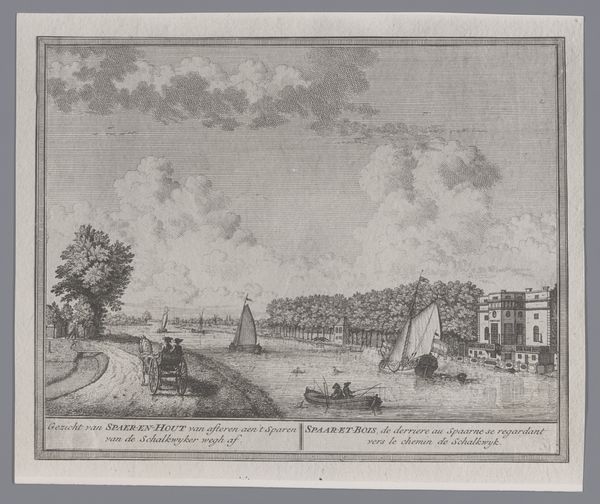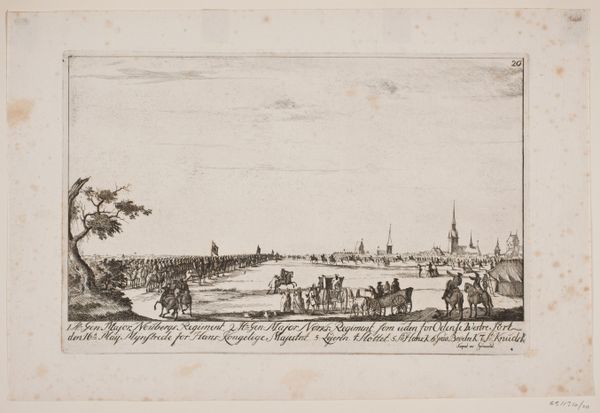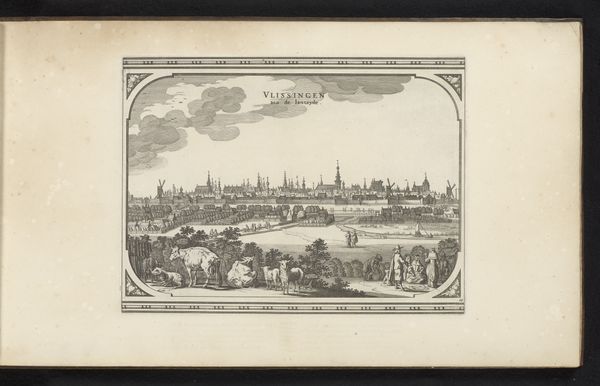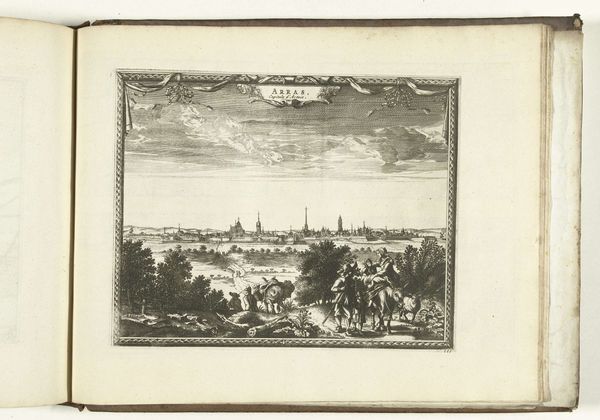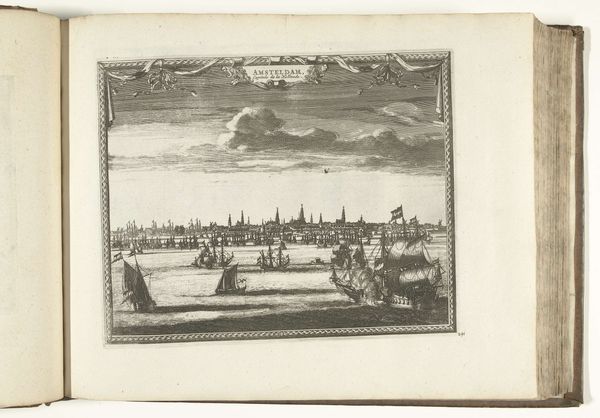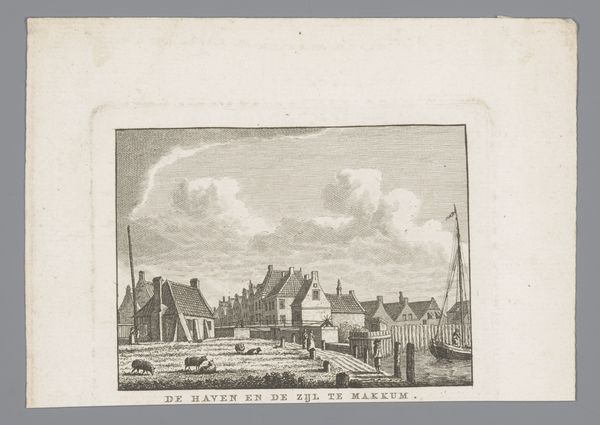
print, engraving
#
baroque
# print
#
landscape
#
cityscape
#
engraving
Dimensions: height 174 mm, width 357 mm
Copyright: Rijks Museum: Open Domain
Curator: Jan Caspar Philips’s “Gezicht op Bergen op Zoom,” created around 1740, offers a detailed panorama of the city. The artwork employs the precise technique of engraving. Editor: It's surprisingly stark. That grayness makes me think of industry and labor, especially in a pre-industrial context. Curator: Considering it’s a print, it’s key to ask how the reproducibility of such an image impacts ideas of city, state, and citizenship at that time. Images such as this were circulated amongst merchant classes to solidify the wealth and resources being accumulated. It’s fascinating how this landscape engages discourses around power and its intersection with visual culture. Editor: Yes, and what about the labor involved? The engraver, Philips, but also the paper-makers, the ink producers, and the dissemination networks—all the hands contributing to its availability, which reinforced the value of the place and class. Curator: Absolutely, and by understanding this as both a social artifact and a historical one, we are better equipped to analyze its symbolic weight. The print almost serves as propaganda; Bergen op Zoom stands, a fortress for Dutch ingenuity and commerce. Who has access, who profits from its creation and viewing? The city represents ideals that can be replicated and shared across broad communities through this print. Editor: Propaganda is right—that civic coat of arms centered and dominating the lower part of the image acts as both brand and signifier. We also must look closely at the kind of work that occupies people depicted: that reveals how closely civic pride and labour align. I am very intrigued by the materials here: metal, paper, ink, all testifying to labour processes of that moment in time. Curator: I agree. Studying the work with an eye towards social justice reveals critical contexts that might otherwise be obscured by its baroque aesthetic. I mean, it's more than a pretty cityscape—it’s about power and people. Editor: Indeed! To appreciate it as just a picture is to overlook a history etched deeply, even materially, into its composition.
Comments
No comments
Be the first to comment and join the conversation on the ultimate creative platform.
